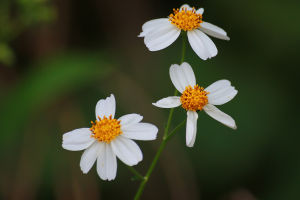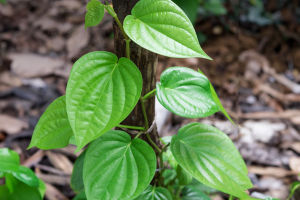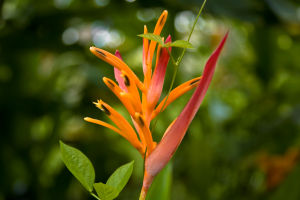Imagine walking through a forest and suddenly coming across a tree that seems to belong to a different era—an ancient tree that was thought to have disappeared millions of years ago.
This is exactly what happened when the Metasequoia glyptostroboides, better known as the dawn redwood or "living fossil," was rediscovered in the 20th century.
It's a plant that was once lost to history but has reappeared in our time, offering us a direct connection to the distant past.
In this article, we'll dive into the story of the Metasequoia glyptostroboides, exploring its remarkable history, unique characteristics, and why it's such an important part of our natural world.
What is the Metasequoia glyptostroboides?
The Metasequoia glyptostroboides is a species of deciduous conifer that is often referred to as the "dawn redwood" due to its resemblance to the coastal redwood (Sequoia sempervirens), which is found in California. However, the Metasequoia glyptostroboides is distinct for being the only living member of its genus.
This tree species has an incredibly long history, having been around for over 100 million years. It was once widespread across North America, Europe, and Asia during the Mesozoic era. However, due to changes in climate and geography, the tree became extinct in most parts of the world and was only thought to exist as fossilized remains. The Metasequoia glyptostroboides was, in essence, believed to be a thing of the past.
Rediscovery: A Living Fossil
It's often referred to as a "living fossil," a term used to describe a species that has remained largely unchanged for millions of years. The Metasequoia glyptostroboides is a perfect example of this concept, as its appearance and characteristics are strikingly similar to those found in fossil records dating back to the age of dinosaurs.
Since its rediscovery, efforts have been made to conserve the Metasequoia and study its growth, biology, and ecological importance. The tree has also been successfully propagated and planted in various parts of the world, making it a symbol of nature's resilience.
Unique Features and Growth
The Metasequoia glyptostroboides is an impressive tree, reaching heights of up to 50 meters (164 feet) when fully mature. It has a broad, pyramidal shape with soft, feathery foliage that turns golden in autumn. The tree's bark is reddish-brown and peels off in long strips, much like the coastal redwood.
One of the most fascinating aspects of the Metasequoia glyptostroboides is its rapid growth rate. When young, it can grow as much as 1.5 meters (5 feet) in a single year, making it one of the fastest-growing conifers in the world. This rapid growth makes it a valuable tree for reforestation projects and landscape use.
The leaves of the Metasequoia are needle-like, soft, and arranged in opposite pairs along the branches. During the spring and summer months, the tree produces small, inconspicuous flowers, followed by small cones that release seeds in the fall.
The Role of the Metasequoia in the Ecosystem
As an ancient species, the Metasequoia glyptostroboides holds an important ecological role. In its native habitat, it grows along riverbanks and in wetland areas, helping to stabilize the soil and prevent erosion. Its roots also contribute to the purification of water by filtering out excess nutrients and pollutants.
The tree provides shelter and food for a variety of wildlife, including insects, birds, and small mammals. While it is not commonly used as a food source for humans, its role in maintaining the health of its ecosystem is crucial for the plants and animals that depend on it.
Why Is the Metasequoia Important to Us?
The Metasequoia glyptostroboides is not just a fascinating piece of botanical history; it also holds great value in conservation and environmental science. As a "living fossil," it serves as a living testament to the process of evolution and the resilience of life on Earth. The tree's survival through millions of years of climate change and geological shifts gives us a glimpse into the past, helping us understand how plants adapt to changing conditions.
Furthermore, the Metasequoia is an important symbol of biodiversity conservation. The efforts to protect and preserve this tree in its native habitat also help preserve the ecosystems that rely on it. As our climate continues to change and ecosystems face increasing pressures, the Metasequoia stands as a reminder of the importance of safeguarding the natural world.
From a scientific perspective, studying the Metasequoia can provide valuable insights into plant biology and genetics. Researchers are particularly interested in its ability to thrive in varying climates and soil types, which could help inform conservation efforts for other species threatened by climate change.
Conclusion: Nature's Incredible Resilience
The Metasequoia glyptostroboides is more than just a tree—it's a living relic from the past, a symbol of nature's incredible ability to survive and adapt. From its prehistoric roots to its rediscovery in the 20th century, this tree continues to inspire awe and wonder. Its presence on Earth today allows us to peer into the distant past and offers hope for the future of biodiversity conservation.
So, the next time you see a Metasequoia, whether in a botanical garden or in the wild, remember that you're looking at a plant that has witnessed millions of years of history. It's a true testament to the resilience of life—and to the power of nature's ability to evolve and endure.
What do you think of the Metasequoia glyptostroboides? Have you ever encountered a living fossil in nature? Let us know in the comments below! We'd love to hear your thoughts on this amazing tree.


